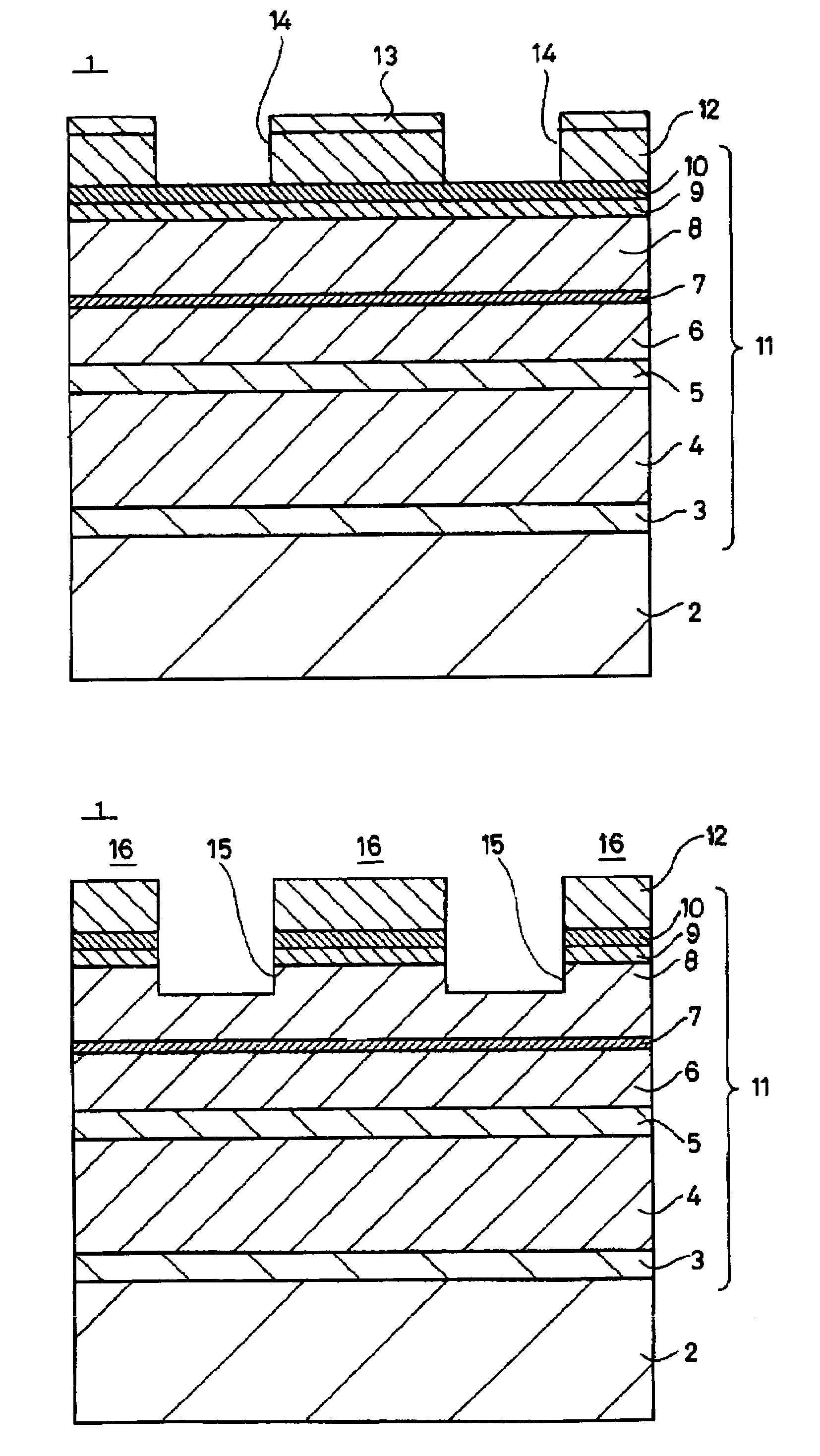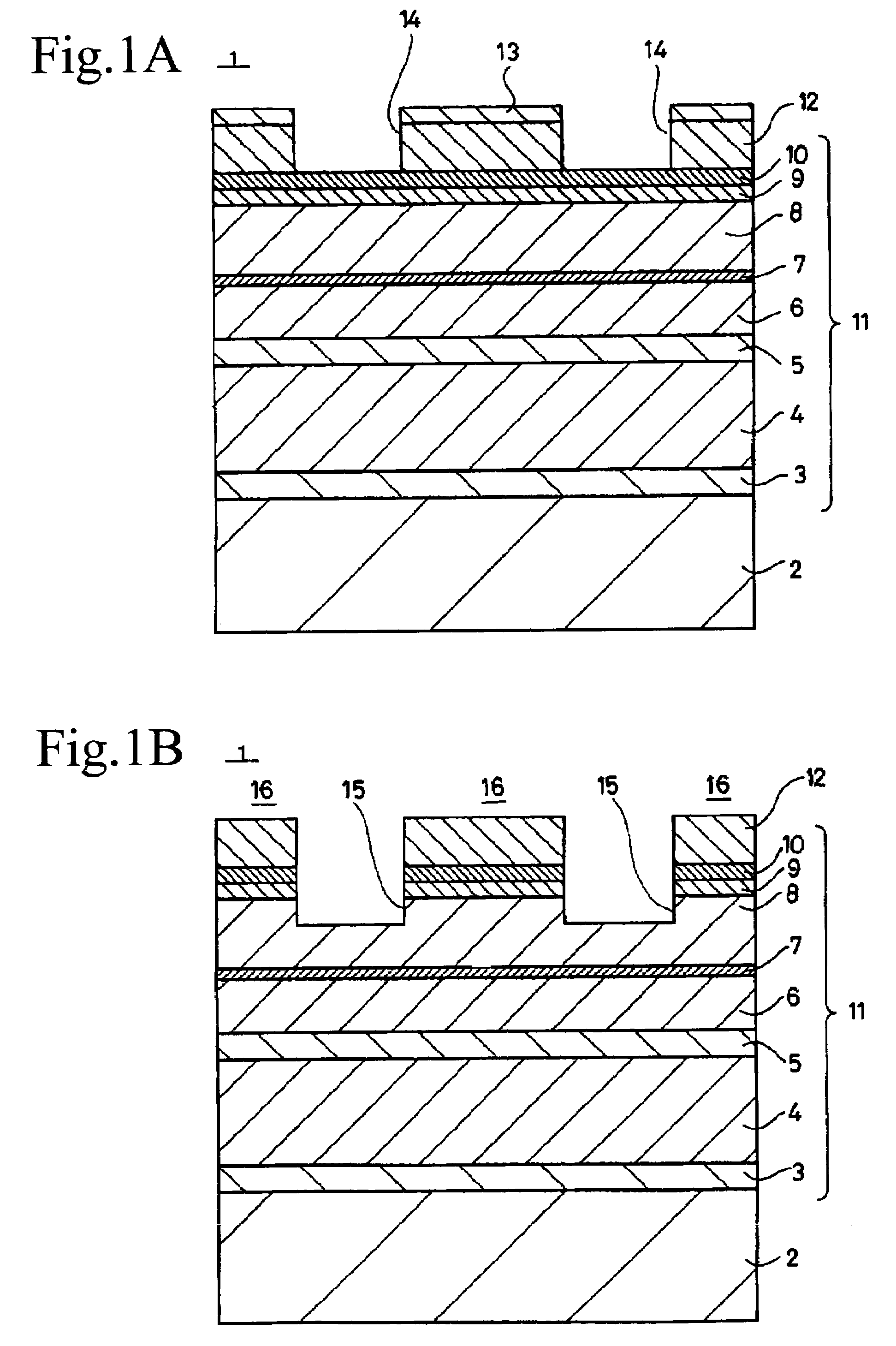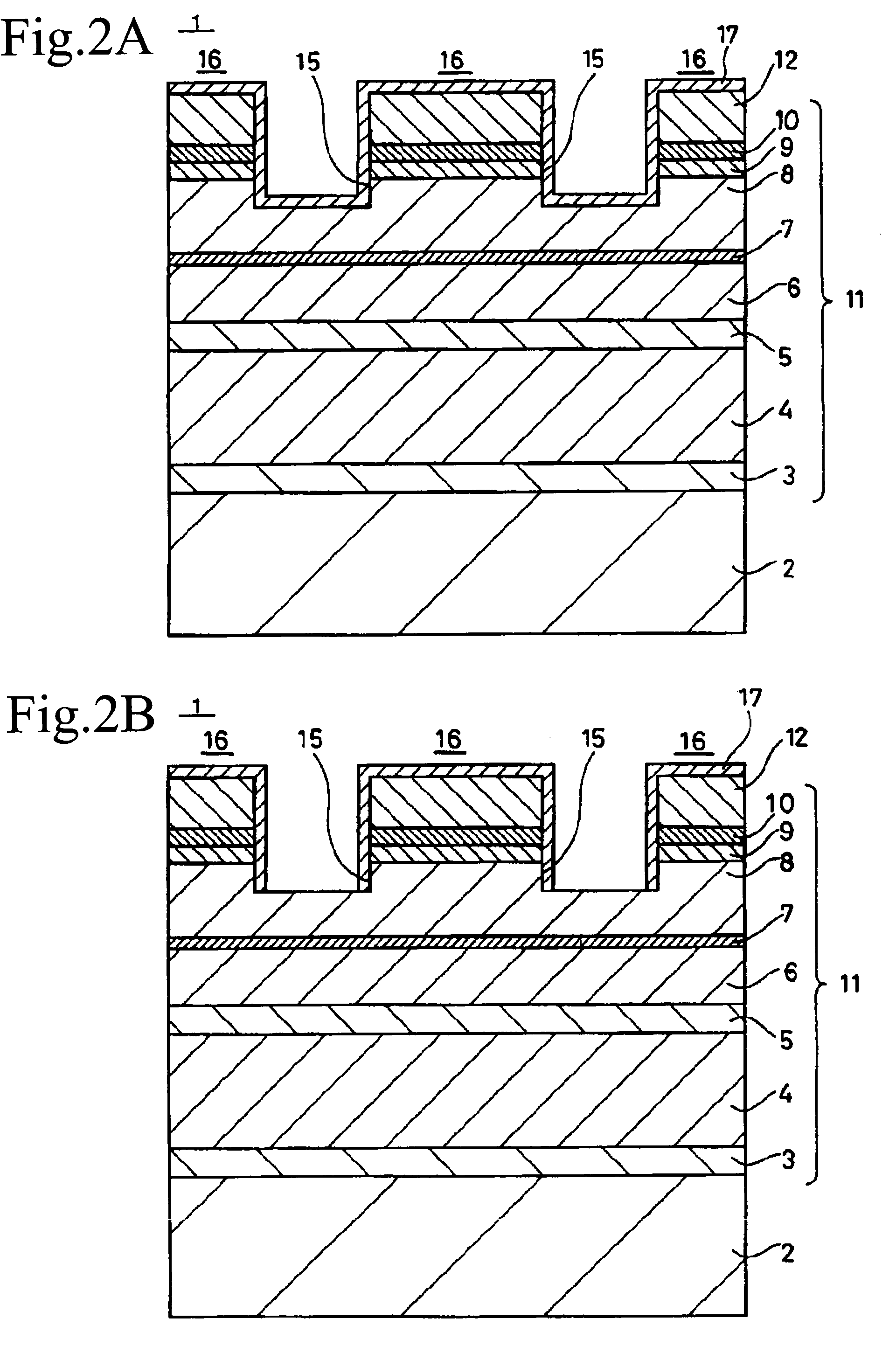Method of manufacturing semiconductor light emitting device
a technology of light-emitting devices and semiconductors, which is applied in the direction of semiconductor devices, lasers, semiconductor lasers, etc., can solve the problems of reducing the thermal saturation level and the tapered shape starts to have some drawbacks, so as to prevent the width of the bottom section of the groove from becoming extremely small, the thermal saturation level and the kink level can be improved, and the effect of excelling in isotropy
- Summary
- Abstract
- Description
- Claims
- Application Information
AI Technical Summary
Benefits of technology
Problems solved by technology
Method used
Image
Examples
first embodiment
[0034]First, the first method of manufacturing a semiconductor light emitting device according to an embodiment of the present invention is described hereinbelow by referring to FIGS. 1 to 4, which are enlarged cross-sectional views illustrating processes of the first method.
[0035]In the present embodiment, first, a buffer layer 3 made of the first conductive type (for example, the n-type) GaInP, a cladding layer 4 made of the first conductive type (for instance, the n-type) AlGaInP, an active layer 5 of MQW (Multi-Quantum Well) structure made of, for example, GaInP and AlGaInP, a first cladding layer 6 made of the second conductive type (for instance, the p-type) AlGaInP, an etching stop layer 7 formed by repeating three times the formation of a 50 Å thick layer made of the second conductive type (for example, the p-type) GaInP and AlGaInP, a second cladding layer 8 made of the second conductive type (for instance, the p-type) AlGaInP, an intermediate layer 9 made of the second con...
second embodiment
[0043]The second method of manufacturing a semiconductor light emitting device according to another embodiment of the present invention is described hereinbelow by referring to FIGS. 5 to 8, which are enlarged cross-sectional views illustrating processes of the second method.
[0044]In the present embodiment, first, a buffer layer 33 made of the first conductive type (for example, the n-type) GaInP, a cladding layer 34 made of the first conductive type (for instance, the n-type) AlGaInP, an active layer 35 of MQW (Multi-Quantum Well) structure made of, for example, GaInP and AlGaInP, a first cladding layer 36 made of the second conductive type (for instance, the p-type) AlGaInP, a first etching stop layer 37 formed by repeating three times the formation of a 50 Å thick layer made of the second conductive type (for example, the p-type) GaInP and AlGaInP, a second cladding layer 38 made of the second conductive type (for instance, the p-type) AlGaInP, a second etching stop layer 39 form...
PUM
 Login to View More
Login to View More Abstract
Description
Claims
Application Information
 Login to View More
Login to View More - R&D
- Intellectual Property
- Life Sciences
- Materials
- Tech Scout
- Unparalleled Data Quality
- Higher Quality Content
- 60% Fewer Hallucinations
Browse by: Latest US Patents, China's latest patents, Technical Efficacy Thesaurus, Application Domain, Technology Topic, Popular Technical Reports.
© 2025 PatSnap. All rights reserved.Legal|Privacy policy|Modern Slavery Act Transparency Statement|Sitemap|About US| Contact US: help@patsnap.com



